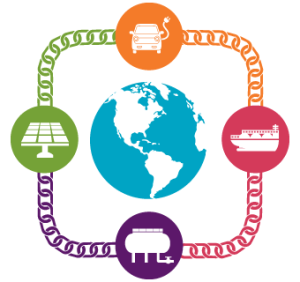An Access Partnership and K&L Gates Symposium
We invite you to join us in the K&L Gates Washington, D.C. office on Wednesday, December 6 for an in-person (only) breakfast symposium focused on the rapidly changing global regulatory landscape surrounding connected cars/autonomous vehicles.
Our experienced panelists are government and industry officials who will discuss upcoming national and international industry and regulatory developments regarding the autonomous vehicles industry, focusing on cybersecurity and privacy issues, and infrastructure-related concerns.
We are pleased to announce the following speakers and panelists. Please note that panels remain in formation.
Welcome
9:00 a.m.
Ryan Johnson, Senior Manager, International Public Policy, Access Partnership
Keynote Speaker: Nat Beuse, Associate Administrator for Vehicle Safety Research, National Highway Traffic Safety Administration (NHTSA).
9:05 a.m.
Nat is responsible for NHTSA’s vehicle safety research activities, which are focused on achieving the agency’s mission of reducing fatalities and injuries caused by motor vehicle crashes.
Keynote Speaker: Andrea Glorioso, Counsellor for the Digital Economy, Delegation of the European Union to the United States.
9:30 a.m.
Andrea acts as the liaison between the European Union and United States on policy, regulation, and research activities related to the Internet and information and communication technologies. He worked for eight years at the European Commission in Brussels on cybersecurity, personal data protection, cloud computing, and Internet governance. He was part of the teams that produced a number of key strategies of the European Commission, including the Action Plan on the Internet of Things and the Cloud Computing Strategy.
Panel Discussion: Infrastructure*
10:00 a.m.
Moderator: Stephen A. Martinko, Government Affairs Counselor, K&L Gates
David S. Kim, Vice President, Government Affairs, Hyundai Motor Company
Greg Rogers, Policy Analyst & Assistant Editor, Eno Transportation Weekly (ETW), Eno Center for Transportation
Jim Tymon, Chief Operating Officer/Director of Policy and Management, American Association of State Highway and Transportation Officials (AASHTO)
Panel Discussion: Cybersecurity & Privacy*
11:00 a.m.
Moderator, Bruce J. Heiman, Partner, K&L Gates
Robert E. Muhs, Vice President, Government Affairs, Corporate Compliance & Business Ethics, Avis Budget Group
Kiyoshi Nakazawa, Representative, Information Technology Promotion Agency (IPA) New York Director, Information Technology Department, Japan External Trade Organization (JETRO) New York Special Advisor to the Ministry of Economy, Trade and Industry (METI), Government of Japan
Al Sisto, Executive Chairman, Device Authority
*Panel in formation.
For more information, please visit our event page.
To RSVP, please click here.

